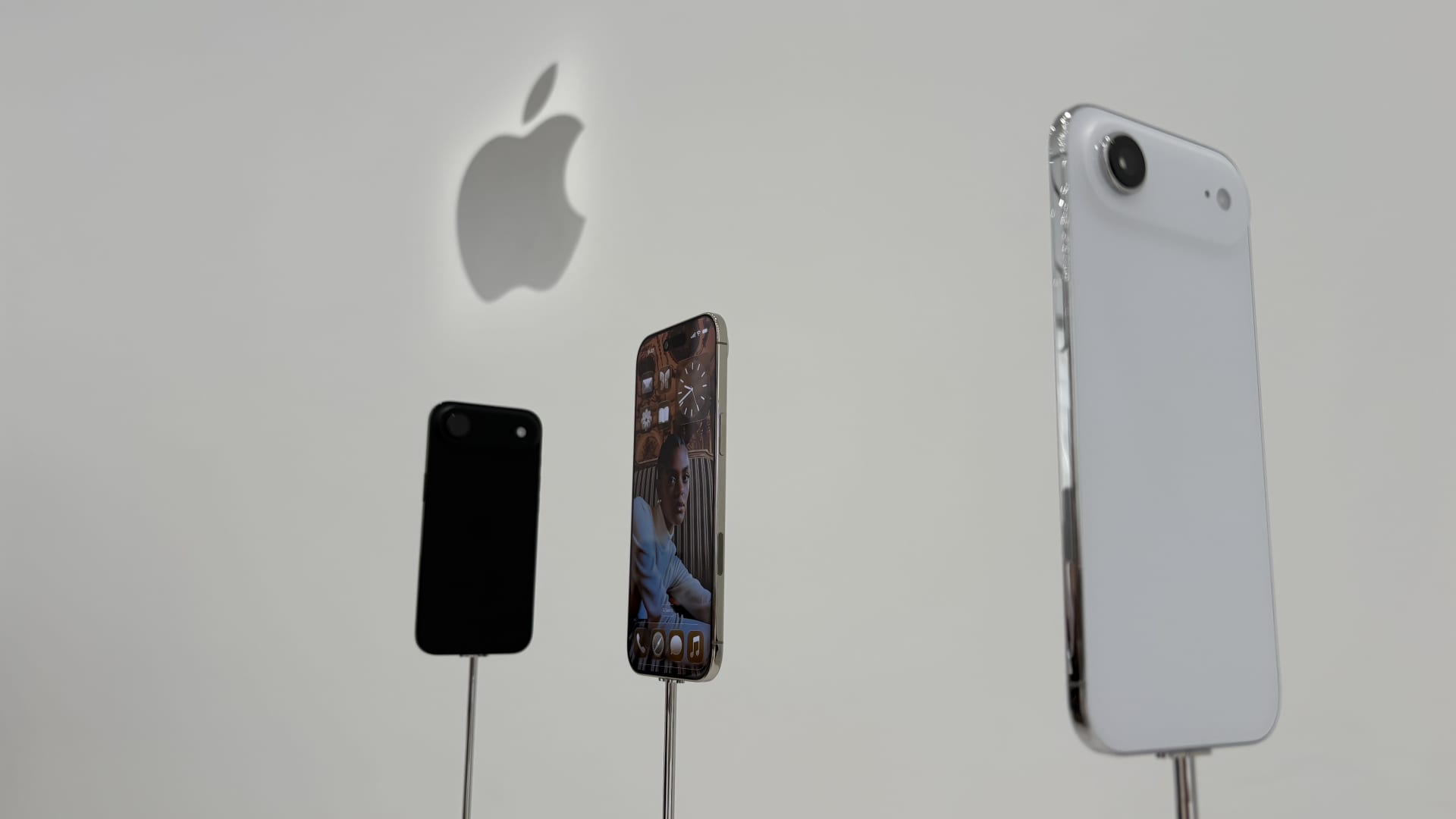Apple’s latest annual product release event gave analysts just enough to keep their hopes up. The company on Tuesday announced the iPhone 17 lineup led by the slimmed-down iPhone Air, alongside its latest Apple Watch and AirPods Pro products. As expected, Apple increased the starting price of one of its iPhone models , the iPhone 17 Pro, and replaced last year’s iPhone 16 Plus with a pricier and thinner iPhone 17 Air device. The company said that this year’s entry-level phones now all come with 256GB of storage, higher than the standard 128GB on last year’s phones. Analysts remain optimistic that Apple can become a stronger growth story after these product releases, even though many were hoping that the company would increase iPhone prices more significantly as the company has warned it could spend $1.1 billion in the current quarter on tariff expenses. Bank of America analyst Wamsi Mohan, for one, lifted his price target on the stock to reflect “increased confidence in growth” as he believes Apple’s use of in-house silicon and hardware advancements could help bolster its AI efforts. Morgan Stanley noted that the iPhone 17 product family is actually “more affordable” year-over-year for consumers, which could increase upgrade rates. AAPL 1Y mountain Apple stock performance over the past year. Most big-name firms stuck by their price targets that suggest upside for Apple shares ahead. The stock is down about 6.4% this year, but has gained more than 14% over the past quarter. Shares traded in the red in premarket trading Wednesday, likely reflecting investors’ disappointment on the lack of major price increases. Take a closer look below for analysts’ key takeaways from the event and how they’re positioned on Apple now: Goldman Sachs: maintained buy rating and $266 price target “AAPL’s decision to eliminate the 128 GB storage option for all announced iPhone models (vs just the iPhone 17 Pro) surprised, but should support continued iPhone ASP growth amidst ongoing device premiumization through implicit $100 price increases to the iPhone 17 Pro (v. 16 Pro) and Air (v. 16 Plus), as well as the addition of a new premium 2 TB storage option for the iPhone 17 Pro Max,” analyst Michael Ng said, adding that Apple’s stock underperformance on Tuesday “may have reflected disappointment” given that the discounted base iPhone 17 model still begins at $799. Bank of America: kept buy rating, raised price target by $10 to $270 “Apple can position itself to lead in delivering AI at the edge, and increased use of its own silicon (A19/A19 Pro chips, C1X modem) and AI hardware enhancements (neural accelerators in each GPU core, thermal management) should help in that effort. We had already factored in $100 higher price for iPhone 17 Air vs. 16 Plus, but our ests move slightly higher as the Pro model now starts with 256GB at $1,099 (vs. $999 for 128GB last year),” Mohan said in a note. “We use a higher multiple on increased confidence in growth.” Citi: kept buy rating and $245 price target “We view the rollout of the iPhone Air – thin, lightweight, yet durable – as laying the groundwork for a foldable phone next year, which we expect could drive a stronger replacement cycle,” analyst Atif Malik wrote in a Tuesday note. “Our 28x P/E is about an 8% premium to Apple’s historical level. We believe a premium is warranted to reflect expanding gross margins (ex tariffs), growing services sales mix, gradual Apple Intelligence adoption, and a strong balance sheet.” Morgan Stanley: maintained overweight rating and $240 price target “Despite modestly higher iPhone prices — primarily a function of eliminating low-end storage SKUs — trade-in values and US wireless carrier promotions are more favorable Y/Y, which actually makes the iPhone 17 family more affordable Y/Y, a potential tailwind to iPhone upgrade rates,” analyst Erik Woodring wrote. “Overall, we’d characterize the event as a slight positive surprise, which against conservative Consensus expectations, should setup favorably for Apple through year-end, atypical of historical seasonality. While we wait to adjust our estimates until we start tracking iPhone lead times (this Friday), we believe our next 12 month estimates are biased upwards, and therefore would be buyers of weakness after today’s stock underperformance.” JPMorgan: kept overweight rating and $255 price target “For investors hoping for a potentially much larger volume cycle driven by the significant redesign in launching the “thinnest” iPhone ever, we expect the bull-case to moderate … On the positives, we expect mix to be a tailwind for the iPhone 17 lineup, driven by greater demand for “Pro” models, which in our view are benefiting from more substantial updates across the generation as well as pricing that is maintained on a SKU-by-SKU basis, although leveraging a higher starting price due to the elimination of the lower-priced 128GB models. With some investors expecting a price increase in the iPhone 17 series relative to iPhone 16, we see the maintained pricing as a positive for volume expectations,” analyst Samik Chatterjee said in a note. Evercore ISI: reiterated outperform rating, lifted price target by $10 to $260 “The long-awaited iPhone Air was announced today and we think this will be a new form factor design that could help reinvigorate Apple’s user base and be the start of a multi-year iPhone roadmap,” analyst Amit Daryanani said in a note. UBS: maintained neutral rating and $220 price target Apple’s results were “splitting the uprights as expected but will leave investors wanting more,” analyst David Vogt said. “Apple did not announce an AI partnership with Google, which was expected by a small group of investors based on our conversations. Additionally, the company did not announce the release of its Apple Intelligence features for Siri, which we expect next year, likely in the spring. However, Apple did announce Live Translation for the AirPods Pro 3 powered by on-device Apple Intelligence to enable real-time translation for wearers. While an interesting use case, we don’t expect the AI application to be a meaningful driver of Apple hardware over the next 3-4 quarters.”





